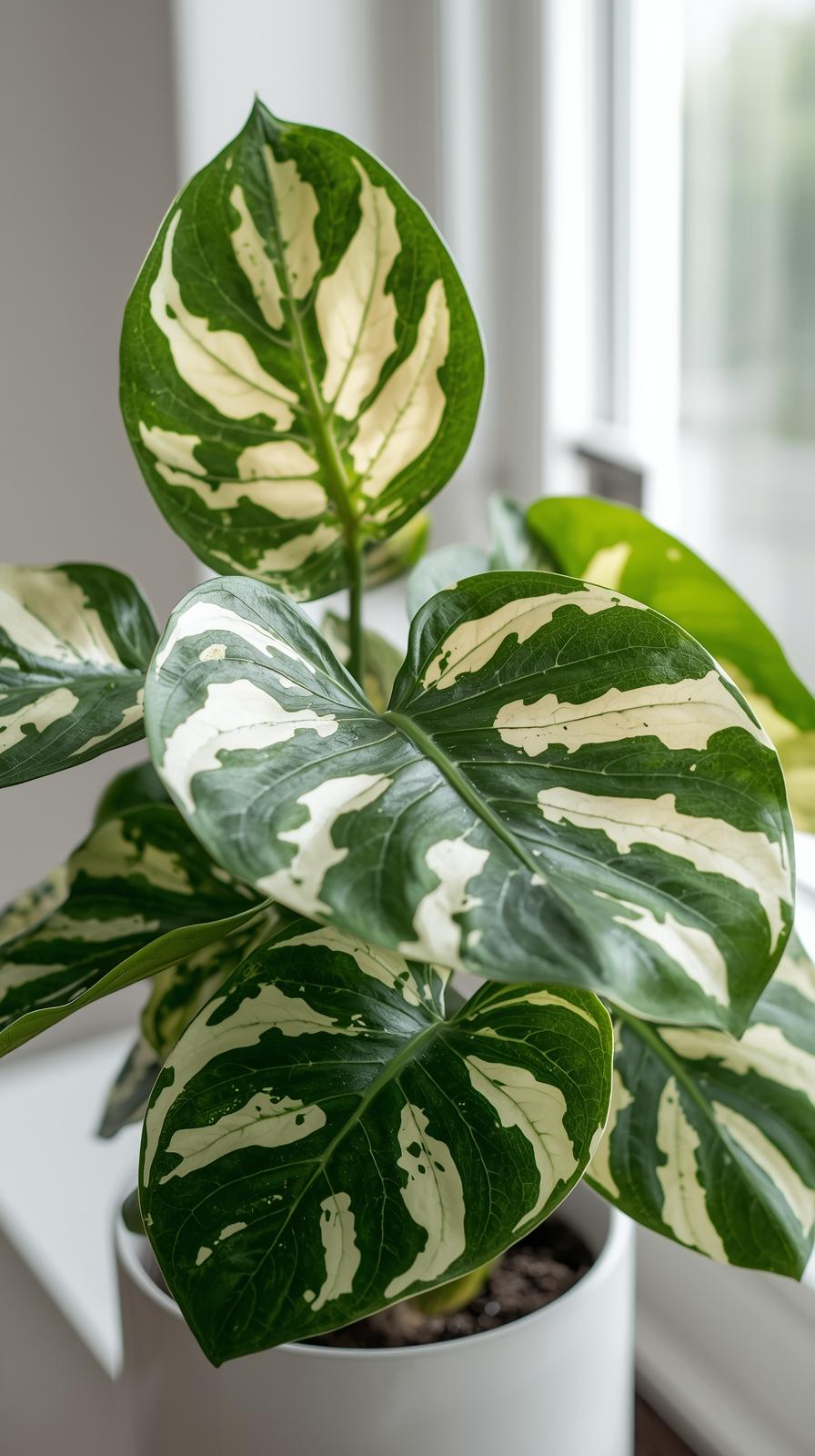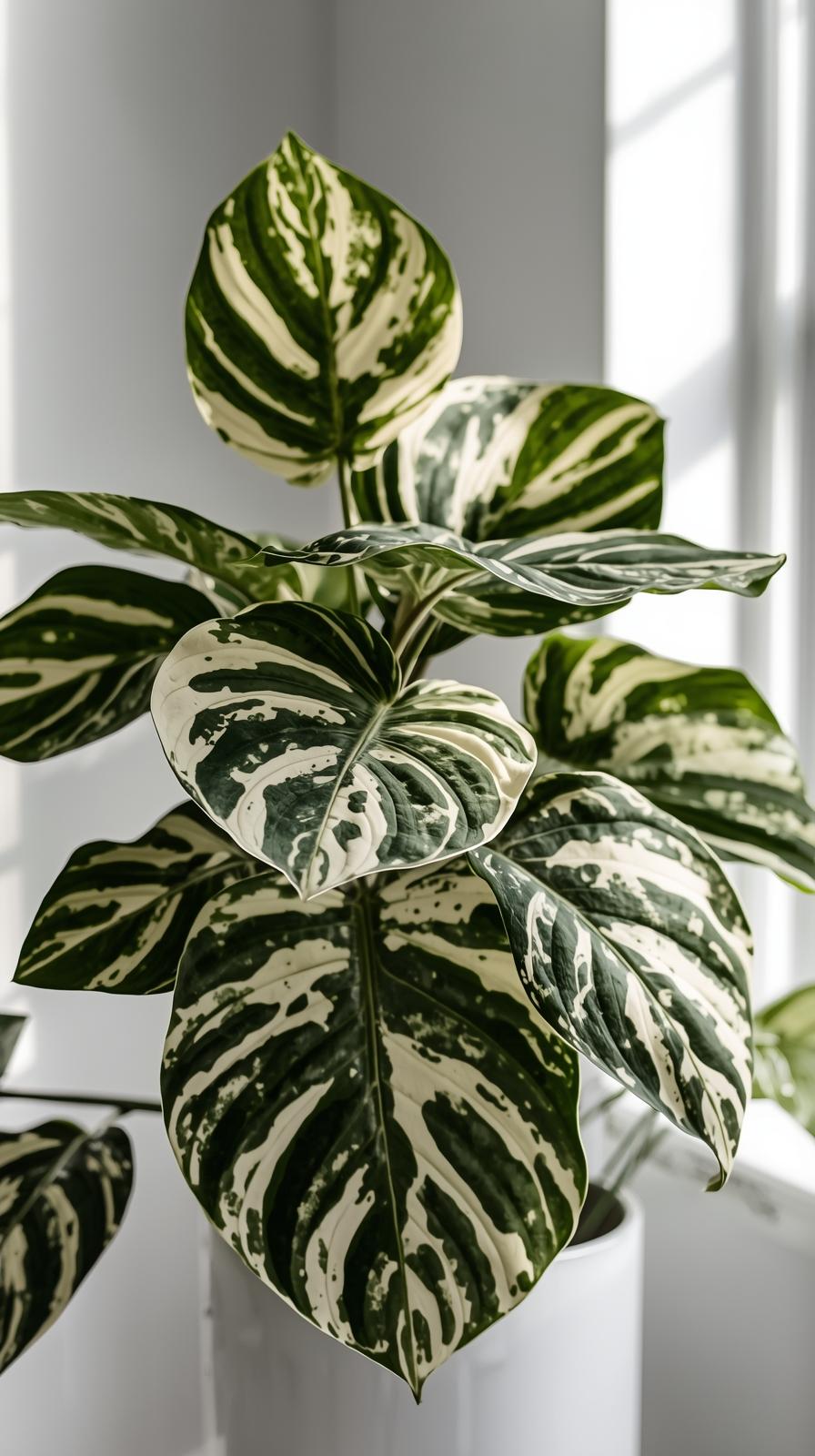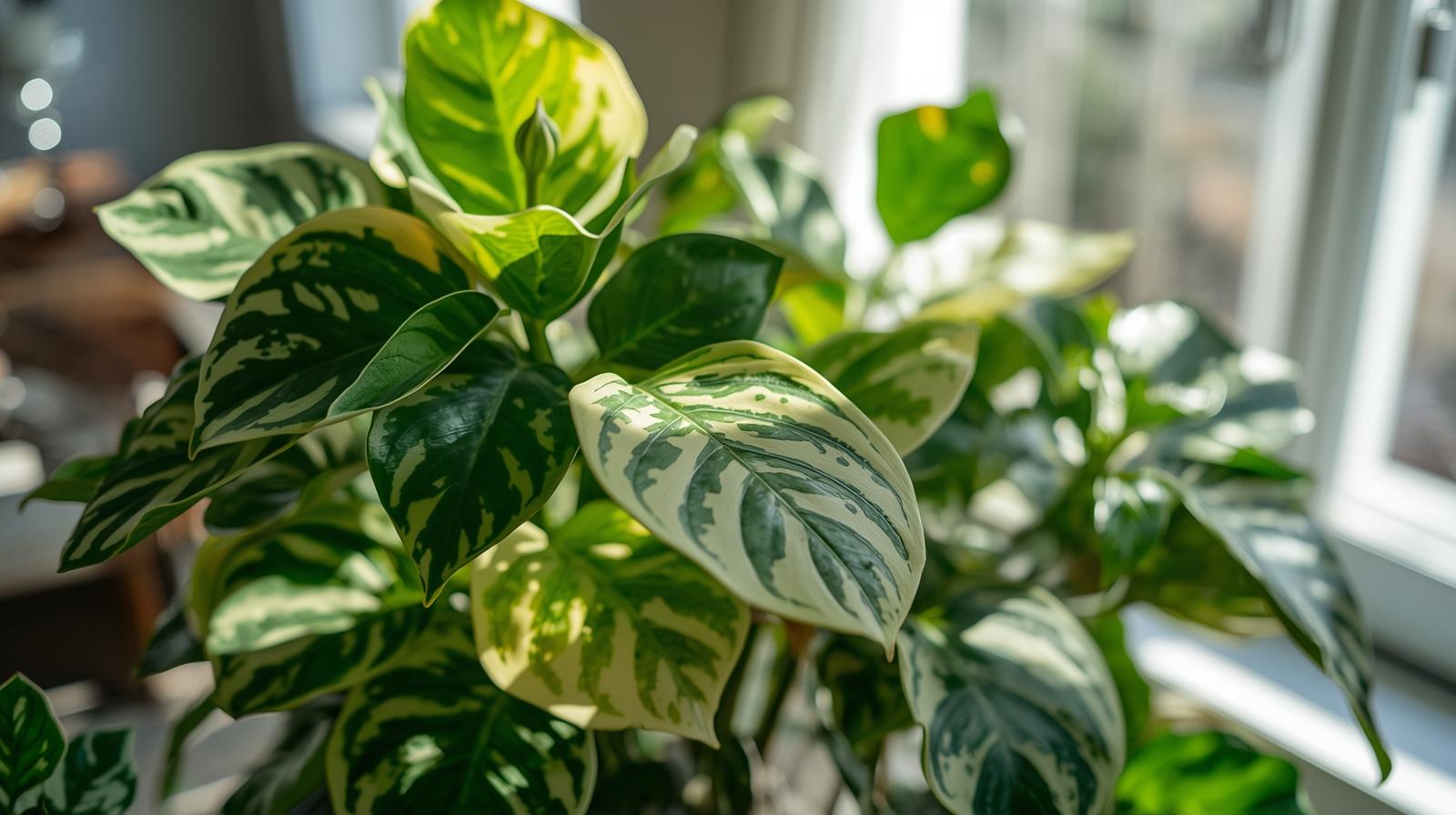The variegated fiddle leaf fig has become the holy grail of houseplant collecting, and for good reason. These striking plants combine the dramatic, violin-shaped leaves of the classic fiddle leaf fig with stunning cream and green variegation that transforms any space into a botanical masterpiece. However, their beauty comes with a reputation for being finicky, leaving many plant parents frustrated when their prized specimen drops leaves or fails to thrive.

After successfully growing variegated fiddle leaf figs for over five years and helping hundreds of plant enthusiasts through their care challenges, I’ve discovered that these plants aren’t actually difficult—they’re just specific about their needs. This comprehensive guide will walk you through everything from basic care requirements to advanced propagation techniques, ensuring your variegated fiddle leaf fig not only survives but becomes the showstopper you envisioned.
Understanding Your Variegated Fiddle Leaf Fig
The Science Behind the Beauty
Variegated fiddle leaf figs (Ficus lyrata ‘Variegata’) are essentially genetic mutations of the standard green variety. The stunning cream and white patterns occur due to reduced chlorophyll production in certain leaf sections, creating those coveted marbled effects. This beautiful quirk comes with a trade-off: variegated sections cannot photosynthesize as efficiently, making these plants more demanding than their solid-green counterparts.
The variegation patterns are completely unique to each plant, ranging from subtle cream edges to dramatic half-moon patterns. Some specimens display sectoral variegation (distinct sections of color), while others show marginal variegation (colored edges) or mosaic patterns throughout the leaf surface.
Growth Characteristics and Expectations
In optimal conditions, variegated fiddle leaf figs can reach 6-10 feet indoors, though they typically grow more slowly than standard varieties due to their reduced photosynthetic capacity. New growth emerges from the top of existing stems, and with proper care, you can expect 2-4 new leaves per growing season.
The most striking feature is how variegation can change over time. Stress, lighting conditions, and seasonal changes can all influence the intensity and pattern of new growth, making each plant a constantly evolving work of art.
Essential Care Requirements
Light: The Foundation of Success
Light management is absolutely critical for variegated fiddle leaf figs. These plants need bright, indirect light for 6-8 hours daily, but the variegated sections are particularly sensitive to both too much and too little illumination.
Place your plant within 3-6 feet of a south or east-facing window, using sheer curtains to diffuse harsh direct sunlight. I’ve found that morning sunlight is particularly beneficial—it provides energy without the intense heat of afternoon rays that can scorch delicate variegated areas.
Pro tip: Rotate your plant weekly to ensure even light exposure. Variegated plants are notorious for growing lopsided as they lean toward their light source, and the variegated sections need consistent illumination to maintain their patterns.
If natural light is insufficient, supplement with full-spectrum LED grow lights positioned 12-18 inches away. During winter months, I increase artificial lighting to 10-12 hours daily to compensate for shorter daylight periods.
Watering: Precision Over Frequency
The biggest mistake I see with variegated fiddle leaf fig care is inconsistent watering. These plants prefer a “soak and dry” approach, but timing is crucial due to their reduced ability to process water efficiently through variegated leaves.
Check soil moisture by inserting your finger 2-3 inches deep. Water only when this top layer is completely dry, typically every 7-14 days depending on season, humidity, and pot size. When you do water, saturate the soil completely until water drains from the bottom holes.
Water quality matters significantly. Use filtered or distilled water when possible, as variegated fiddle leaf figs are sensitive to chemicals in tap water. If you must use tap water, let it sit for 24 hours to allow chlorine to evaporate.
During growing season (spring and summer), maintain consistent moisture without waterlogging. In winter, reduce watering frequency by about 30% as growth slows and water uptake decreases.
Soil and Drainage: The Hidden Foundation

Standard potting soil is too dense for fiddle leaf figs. Create a well-draining mix using:
-
40% high-quality potting soil
-
30% perlite or pumice
-
20% bark chips or coco coir
-
10% worm castings for gentle nutrition
This blend ensures excellent drainage while retaining sufficient moisture. Poor drainage is the fastest way to kill a variegated fiddle leaf fig, as their sensitive root systems are particularly susceptible to root rot.
Always use pots with drainage holes, and consider adding a layer of leca balls at the bottom for extra insurance against waterlogged roots.
Temperature and Humidity Control
Maintain temperatures between 65-75°F consistently. Variegated fiddle leaf figs are less tolerant of temperature fluctuations than standard varieties, so avoid placing them near heating vents, air conditioning units, or drafty windows.
Humidity should stay between 40-60%. I achieve this using a humidifier during dry months or grouping plants together to create a microclimate. Pebble trays work but require consistent maintenance to prevent stagnant water issues.
Common Problems and Expert Solutions
Leaf Drop: Understanding the Causes
Leaf drop is the most common complaint, but it’s usually preventable once you understand the triggers. Variegated fiddle leaf figs drop leaves due to:
Watering inconsistencies: Both overwatering and underwatering cause stress. Overwatered plants develop yellowing leaves that drop, while underwatered plants drop lower leaves to conserve energy.
Light stress: Sudden changes in lighting conditions shock the plant. This commonly occurs when moving plants indoors for winter or relocating them within your home.
Environmental changes: Temperature fluctuations, drafts, or humidity changes trigger defensive leaf dropping.
Solution approach: Identify the specific cause before adjusting care. If you’ve recently moved the plant or changed watering habits, maintain current conditions for 2-3 weeks to allow adjustment before making further changes.
Brown Spots and Edge Burn
Brown spots on variegated sections often indicate light burn or water quality issues. The cream and white areas lack protective chlorophyll, making them vulnerable to damage that wouldn’t affect green portions.
Immediate action: Move the plant away from direct sunlight and examine your water source. Switch to filtered water and trim affected leaves cleanly with sterilized scissors to prevent spread.
Prevention: Monitor afternoon light intensity and adjust positioning seasonally as the sun’s angle changes throughout the year.
Losing Variegation
When new growth emerges solid green, it typically indicates insufficient light. The plant redirects energy to producing more chlorophyll-rich leaves for better photosynthesis under low-light conditions.
Recovery strategy: Gradually increase light exposure over 2-3 weeks. Dramatic lighting changes can shock the plant, so make adjustments slowly. New growth should show improved variegation within 2-3 months of optimized lighting.
Advanced Care Techniques
Seasonal Adjustments
Spring activation: Increase watering frequency gradually as daylight hours extend. This is prime time for fertilizing with a diluted, balanced fertilizer every 4-6 weeks.
Summer maintenance: Peak growing season requires consistent moisture and maximum light exposure. Monitor for rapid growth that might need pruning for shape control.
Fall preparation: Begin reducing watering frequency and stop fertilizing by late September. The plant naturally slows growth in preparation for winter dormancy.
Winter care: Minimal watering, increased humidity to combat dry indoor air, and supplemental lighting become crucial. Expect little to no new growth during these months.
Pruning and Shaping
Pruning variegated fiddle leaf figs requires careful consideration of variegation patterns. Always cut just above a node, and prioritize maintaining sections with good variegation when making shape decisions.
Strategic timing: Prune in early spring before active growth begins. This allows the plant to direct energy into new, well-positioned growth throughout the growing season.
Technique: Use clean, sharp pruning shears to make angled cuts that shed water away from the remaining stem. Remove any fully green branches first to encourage variegated growth.
Propagation Success
Propagating variegated fiddle leaf figs can be challenging but rewarding. Take cuttings that include both variegated and green sections for the best success rate.
Water propagation method: Place 6-8 inch cuttings in filtered water, changing it every 3-4 days. Roots typically develop within 3-6 weeks, but variegated cuttings may take longer than standard varieties.
Soil propagation: Dip cuttings in rooting hormone and plant in a well-draining propagation mix. Maintain consistent moisture and humidity using a clear plastic cover to create a mini-greenhouse effect.
Creating Optimal Growing Conditions

The Perfect Spot Assessment
Evaluate potential locations by observing light patterns throughout the day. The ideal spot receives bright, filtered light in the morning and softer light in the afternoon. Avoid locations with:
-
Direct afternoon sunlight through windows
-
Cold drafts from doors or windows
-
Heat sources like radiators or fireplaces
-
High-traffic areas where the plant might be bumped
Long-term Success Strategies
Consistency is key: Establish routines for watering, rotating, and monitoring. Variegated fiddle leaf figs thrive on predictability more than most houseplants.
Patience with growth: Accept that variegated varieties grow more slowly. Focus on maintaining healthy existing foliage rather than pushing for rapid growth that might compromise the plant’s stability.
Investment in quality tools: A reliable moisture meter, appropriate fertilizer, and proper watering equipment make care significantly easier and more precise.
Troubleshooting Quick Reference
When problems arise, systematic diagnosis prevents panic decisions that often make situations worse. Start by examining the most recent changes in care routine, environmental conditions, or plant placement. Most issues resolve within 4-6 weeks when appropriate adjustments are made consistently.
Emergency interventions: If you notice sudden, rapid leaf drop, immediately check soil moisture and drainage. Remove from soggy soil if necessary, trim damaged roots, and repot in fresh, well-draining mix.
Preventive monitoring: Weekly inspections catching problems early are far more effective than reactive treatments. Look for subtle changes in leaf color, texture, or growth patterns that indicate developing issues.
Your variegated fiddle leaf fig can become the stunning centerpiece you envisioned with consistent, informed care. Remember that these plants reward patience and attention to detail with years of botanical beauty. Start with proper lighting and watering consistency, then build on that foundation with the advanced techniques that match your growing confidence and experience.



